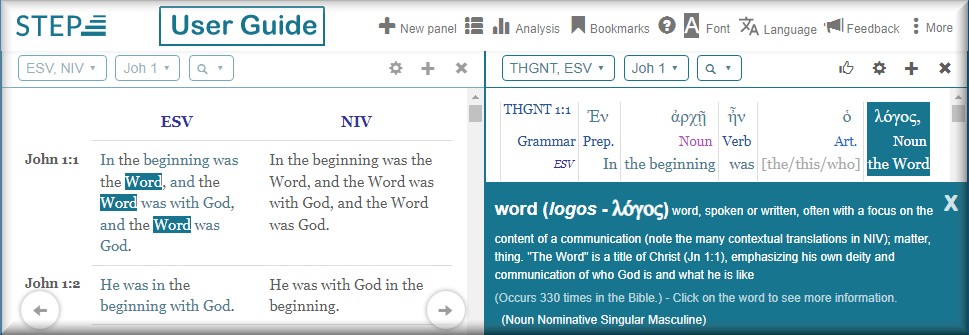STEPBible offers you the following texts to encourage you and aid you in your study of the Bible.
Bible Study Techniques
Bible Study Notes by Contributors
NT Manuscripts
Among the thousands of manuscripts are thousands of differences (known as 'variants'), but 94% of these are differences in spelling or word order or other minor differences with the same meaning. By studying the age of manuscripts and the habits of scribes it is possible to discover what the original text was, though there is always room for major academic disputes about minor matters.
Image from:
https://seanmcdowell.org/blog/what-is-the-most-recent-manuscript-count-for-the-new-testament
|
OT Manuscripts
 The thousands of manuscripts are virtually identical due to careful scribal copying. The oldest manuscripts do have significant differences. The text form that was chosen as the standard has the highest proportion of problematic Hebrew. This suggests it is earlier than the versions which early scribes made easier to read, before the standard text was fixed.
Image from: https://scottmanning.com
|
OT Editions
Most editions are based on a single manuscript with a list of variants found in others. Some editions are created by picking the variants that are considered likely to be original. The Leningrad Codex is most often the basis of editions because in almost all cases of differences, this manuscript contains the variant that is considered the oldest.
|
OT Variants
Manuscript margins often record a different 'reading' ( Qere) for what is 'written' ( Ketiv) in the text. Occasionally these are suggested corrections to scribal errors in the past, but usually they are updated spellings or better ways to audibly read the text in synagogues. These are important because most Bibles (including the KJV) translate the Qere rather than Ketiv when the meaning is different.
Image from: https://www.independent.co.uk/
|
OT Scribal editing
 Manuscript side and bottom margins contain a multitude of markings such as counting how many times a rare spelling occurs (showing the strange spelling is intentional), the mid-point of books, or end-of-paragraph marks etc. These notes helped future scribes copy the manuscript exactly, without being tempted to 'correct' a strange spelling. Some passages in the Talmud record a few words that traditions indicate may have been omitted, changed, or added to the text.
Image from: https://www.michaeljkruger.com/
|
Bible Study Techniques
This section will contain material written to help you in your exploration of the Bible, using STEPBible, or any Bible medium.
Bible Study Notes by Contributors
This section will contain material offered by contributors to STEPBible.
 The thousands of manuscripts are virtually identical due to careful scribal copying. The oldest manuscripts do have significant differences. The text form that was chosen as the standard has the highest proportion of problematic Hebrew. This suggests it is earlier than the versions which early scribes made easier to read, before the standard text was fixed.
The thousands of manuscripts are virtually identical due to careful scribal copying. The oldest manuscripts do have significant differences. The text form that was chosen as the standard has the highest proportion of problematic Hebrew. This suggests it is earlier than the versions which early scribes made easier to read, before the standard text was fixed. Manuscript side and bottom margins contain a multitude of markings such as counting how many times a rare spelling occurs (showing the strange spelling is intentional), the mid-point of books, or end-of-paragraph marks etc. These notes helped future scribes copy the manuscript exactly, without being tempted to 'correct' a strange spelling. Some passages in the Talmud record a few words that traditions indicate may have been omitted, changed, or added to the text.
Manuscript side and bottom margins contain a multitude of markings such as counting how many times a rare spelling occurs (showing the strange spelling is intentional), the mid-point of books, or end-of-paragraph marks etc. These notes helped future scribes copy the manuscript exactly, without being tempted to 'correct' a strange spelling. Some passages in the Talmud record a few words that traditions indicate may have been omitted, changed, or added to the text.


